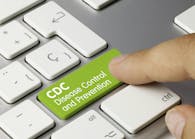If anything, the 2020 pandemic inflicted three wounds on the healthcare supply chain: Stockouts, followed by shortages due to unexpected demand surges and the grim realization that the industry may not be prepared to handle the next big – and potentially worse – pandemic.
Thankfully, none is mortal or fatal to operations.
For the last two years, Healthcare Purchasing News explored the possibilities of a future-ready supply chain through available and emerging technology, including the promise of the latter’s conceptual applications.
To access the 2019 story, visit https://www.hpnonline.com/21105835/.
To access the 2018 story, visit https://www.hpnonline.com/13001355/.
Yet sources showed HPN it remains painfully obvious that technology may not be enough. Of course, it never was (sorry, 3-D printing, which did come in handy for making face shields and masks this year).
At best, technology represents a means to an end – but what about the end from the means?
This year, HPN sought to explore the end game sought and the process – humans with ingenuity augmented by technology ... from raw materials to manufacturing to distribution to warehouse to hospital to bedside to the patient’s home or trash bin.
A recent study found that nearly 50 percent of businesses say it will take a year or more before supply chains return to pre-pandemic levels and that higher costs will continue even as supply ramps up.
This raises at least five noteworthy questions: Will the Future-Ready Supply Chain call for:
- Access to more warehouse or storeroom space?
- Some type of hybrid hub-and-spoke system for suppliers to meet demand spikes?
- More investment in and implementation of cloud-based, real-time computer tracking?
- More investment in and implementation of voice recognition and real-time image capture?
- Fluid exchange of information that accelerates the adoption and implementation of blockchain capabilities among suppliers, providers and payers?
At minimum, experts agree that Supply Chain must master four areas to emerge from 2020’s challenges a more responsive and visionary profession. They are, in random order, supply chain visibility; real-time data accessibility, analysis and transparency; supply network mapping and effective demand management. (See figure 1 for explanations.)
Figure 1
4 areas healthcare supply chain must master
- Supply Chain visibility: Everybody recognizes and values Supply Chain (including its data) as the go-to experts on sourcing and negotiations, including the C-suite and even if the C-suite doesn’t invite Supply Chain within its executive ranks.
- Real-time data accessibility, analysis and transparency: This precludes that data on evaluation, ordering, contracting, purchasing, usage, outcomes and disposal patterns are accurate and reliable, and that colleagues trust and value the conclusions derived from them.
- Supply network mapping: This encompasses way more than just information technology. It involves tracing product development from raw materials as well as labor elasticity and flexibility throughout the production, usage and disposal channels.
- Effective demand management: This includes understanding consumption/usage patterns and being able to pivot (proactively versus reactively) during crises and disasters that could initiate demand spikes (short-term) and surges (long-term).
What should Supply Chain do?
You might surmise that products represent the primary responsibility of Supply Chain because, after all, people stereotype Supply Chain as the mover of stuff.
Technically, Supply Chain does that … and more.
By and large, one of the key elements of Supply Chain’s success is data – pure and simple. Supply Chain requires access to accurate data that can be shared conveniently to enable and drive decisions – including managing demand as has been demonstrated this year amid the pandemic.
“Data accessibility, accuracy and transparency are key areas of focus in today’s fast-moving supply chain,” Halligan told HPN. “Leaders routinely utilize data to help make efficient and effective decisions about how to manage procurement, inventory placement and order fulfillment. Successful supply chains, and most progressive leaders in the industry, are continuously looking to improve the accessibility, accuracy and transparency of their information by digitizing activities and capturing data.”
All four are closely related and interwoven, according to Steve Downey, Group Vice President, Supply Chain Operations, Vizient.
“If you don’t have the information on a network you can’t manage demand, and you don’t get transparency without the data on the network,” Downey noted.
Supply chain visibility means supply chain has the resources, alignment, data and access necessary to do the best job they can, Downey explains, detailing successful organizations amid the pandemic.
“In working with our member hospitals during this pandemic, those with the most successful supply chains have C-suite access, alignment with clinical teams, and a single executive leader who is managing all of the supply chains within the health system with integrated data and technology. This structure and level of visibility with key stakeholders brings the right tie to strategy and organizational support,” he said.
Downey calls for a cohesive fusion of supply mapping, demand management and real-time data, something on which Vizient has been working. “Other industries have leveraged these sorts of third-party network solutions to help supply resiliency, and that has proven itself to help solve all these together,” he added.
Supply Chain first must focus on correct and timely data on which to base contracting and purchasing decisions, according to Downey. “Accurate, real-time data showing on-hand inventory is key to enabling health systems to adjust par levels as necessary to meet shifting clinical demand,” he said. “If categories are set improperly, it’s hard to source without price and spend.
“If demand management is wrong, then you will not have enough supplies no matter what,” Downey continued. “Being able to predict needs and work with suppliers to establish agreements to meet those needs, leads to greater resiliency.”
Downey also cautions providers to learn whether products are made or stored in a single facility located in a high-risk area because that should motivate Supply Chain to invest in additional inventory or work with a secondary supplier approved through a value analysis process.
“To me it starts with visibility,” Pleshek said. “Once key supply chain assets are visible they can be tracked and monitored. Visibility information is great, but if it isn’t transparent and shared across the supply chain it doesn’t do much good. I believe data analysis, including predictive analytics and [artificial intelligence] is the key to harness visibility data to enable proactive demand management.”
But Jody Hatcher, Director, PartsSource, and former President, Supply Chain Services, Vizient, further qualifies the nature of data needed.
Reliable data and advanced analytics can identify future potential supply bottlenecks and prevent shortages, as well as equipment and staffing needs, according to Hatcher. This includes forecasting bottlenecks and addressing them before they materialize or become acute, which requires precise information about the inventory available in the entire supply chain, not just an organization’s own inventory, as well as the capacity of suppliers, demand patterns and rates of consumption.
“Clearly, getting that data requires transparency and visibility into channels with honest and open communication between providers, suppliers and distributors to support inventory planning,” Hatcher said. “Without that visibility, healthcare organizations end up, as they did in the early days of COVID-19, ordering product not knowing how much was available and where it was going, which led to either under-ordering or hoarding.”
Mark Wheeler, Director, Supply Chain Solutions, Zebra Technologies, relays the age-old axiom that inaccurate and unreliable data cast doubts on everything else.
“Without reliable, repeatable real-time data from the edge, the rest of the supply chain planning and optimization will be suspect,” Wheeler said. “If the decision support systems prove over time to be unreliable due to poor data, they won’t be used. With reliable data, analytics engines can transform this data into useable information. This is what supply chain visibility is – useful information about the supply chain status. Once this visibility is established, information is distilled to key metrics tracking demand signals and the overall supply chain network.”
Chaun Powell, Group Vice President, Strategic Supplier Engagement, Premier Inc., agrees.
“In order to be effective, supply chain professionals must first have transparency into the totality of the supply chain, including the upstream raw materials that go into finished products and ancillary supplies. Absent this vital information, the supply chain gets relegated to purchasing and logistics.”
Powell attributes 68 percent of disruptions to “poor demand signaling to suppliers,” which is why effective demand management and supply network mapping are critical components of supply chain preparedness.
“Alongside an understanding of any potential risks with their suppliers, supply chain professionals can then apply real-time data demand signals to accurately identify the intersection of their demand and sustainable supply,” Powell said. “The icing on the cake is real-time access to usage, inventory and location information – rounding out the necessary improvements to transform the healthcare supply to the same level of sophistication that we see in the automotive, electronics and food sectors.”
Hatcher warns providers, which may be trapped in a data quagmire, against casting blame on suppliers.
“The onus of supply chain opacity during COVID-19 is not resting on the shoulders of the suppliers alone,” he argued. “Greater supply chain transparency requires open communication by all parties. Providers can help by being willing and able to provide better inventory visibility, better demand forecasts, faster order placement, and greater collaboration with their suppliers. For their part, suppliers can work with distributors and providers to manage to their historical ordering patterns and avoid stocking up outside of the norm, including previous spikes in demand.”
Ultimately, Hatcher defines the future-ready supply chain as requiring visibility into the location, quality and availability of inventory across various members of the supply chain. “To accomplish that, providers need more sophisticated data, automation and analytics, and ideally an online marketplace to consolidate the hundreds of supplier relationships that most providers maintain,” he added.
Standard foundation
To succeed now and in the future the marketplace needs a solid foundation, emphasizes Jeremy Owens, Vice President of Supply Chain Logistics, LeeSar. Standards matter.
“Drastic improvements in data management must be achieved before anything else can move forward,” Owens noted. “Universal data standards have to be widely adopted and implemented throughout the healthcare supply chain verticals. Without the data standards, data integrity will never be achieved, thus falling short of any goals for transparency, trust or value. Despite best efforts for organizations to normalize this non-standard data, there will always be doubt and problems that will hamper the real-time data accessibility.”
Owens points to mapping out the supply network channels as the logical next step or ground floor of the solution.
“From raw goods to the end users, this map tool now provides a complete picture of the path the product takes,” he continued. “Having this information, an organization can now start to evaluate where risk points could occur should a disrupting event present itself. This exercise will help identify the needed contributors for data sharing when building out the visibility infrastructure.”
Once an organization centers on standardized data with all collaborators identified from the mapping exercise, then it can build on the foundation and ground floor to reach the next level - visibility.
“Linking all the data together to gain visibility into the complete healthcare supply chain is a lofty goal,” Owens admitted. “However, it’s been something the healthcare industry has needed for a very long time. Many other supply chain sectors have been successful in achieving this goal. Why hasn’t healthcare? Is it because of rapidly changing technology, the complexity of clinical preferences, or is it about transparency causing issues with insurance reimbursement? Regardless of the reasons, the healthcare supply chain sector is extremely behind. Considering we are literally talking about ‘life or death’ in some instances, we should have these visibility tools in place to mitigate risks where the stakes are high.”
Owens also questions the hubbub around demand management without an effective framework in place.
“Each organization has its way of managing demand,” he said. “However, despite the best efforts and methods, understanding high-level usage patterns cannot be fully achieved without all of the preceding steps in place. Data management must be solid, and considerations for all factors impacting production or demand must be mapped. Additionally, unobscured visibility to the complete supply chain must be present to fully understand consumption patterns and to nimbly determine strategy for mitigating any disruptions.”
Healthcare isn’t retail
Creating actionable change requires a thoughtful approach to tackling supply chain fundamentals, according to Tom Redding, Senior Managing Director, Healthcare Services, St. Onge Company.
While some may see managing demand as the destination once other elements in the journey are implemented, Redding begins with demand and works backward.
“The priorities for implementing change starts with effective demand management and knowing what the customer needs, wants and uses on a daily basis as well as variability of demand,” Redding indicated. “Since healthcare delivery does not mimic a ‘retail transaction,’ the ability to readily capture and collect information for planning purposes is many times limited. To effectively manage the supply chain, it is critical to understand the demand side of the equation since it drives many of the upstream decisions, such as manufacturing and distribution.”
With effective demand management in place, sharing data transparently with others for analytical, cataloguing and decision-support purposes represents the next outcome, which enables optimal supply chain visibility, he noted. Anything short of that may lead to visibility that may not be in a positive light, he added.
“Taking the supply chain to the next level with end-to-end track-and-tracing once the foundational elements are in place enables health systems to realize long-term value and position themselves to be a leader in the industry,” Redding said. “Supply network mapping will require a broader industry perspective and support to realize the inherent benefits – it goes beyond the internal circle of influence to building the case for industry change.”
Dawn of a black swan
“COVID-19 has been a black swan event of historic proportions and has opened the eyes of procurement officers and supply chain professionals who quickly realized they had limited information about their suppliers’ global operations, and most dramatically, they learned they had little visibility to their suppliers’ suppliers,” Rose noted. “Many woke up to the fact they needed greater visibility into their second, third or fourth-tier suppliers. It took many unprepared companies more than three months to react to the impacts of COVID-19 and get their mitigation efforts stabilized and moving forward.”
Rose insists that by analyzing data extracted from continuous monitoring of world events, supply chain experts can increase their visibility and get ahead of their competitors during major disruptions.
As with travel, the road to greater visibility requires a map that extends beyond the overt, Rose recommends.
“Supply chain mapping provides this visibility, which provides greater predictability on how to get materials from point A to point B, and, most importantly, identifies risks and failures in the supply chain while giving recommendations on how to mitigate them,” she continued. “Mapping is critical for identifying where suppliers are located, the origins of parts and locating qualified and vetted alternate sites. Many companies manage their suppliers by giving priority to their highest-spend tier 1 suppliers. However, 80 percent of the largest disruptions in the supply chain stem from lower-spend and single-sourced suppliers. This is why mapping is so critical to ensuring greater visibility across all tiers of the supply chain.”
For example, a $1 part may be the cause of the delay of a billion dollar product, Rose asserts. “This is one reason why Resilinc advocates for prioritization of suppliers based on revenue impact versus spend,” she said. “By identifying tier 2 and tier 3 suppliers used by multiple tier 1 suppliers, the company can add any bottlenecks to their 24/7 monitoring to better prepare for an effective and speedy response.”
Using monitoring and mapping tools effectively can provide Supply Chain leaders with the “peace of mind” that stems from real-time data accessibility, analysis and transparency, Rose surmises.
“In the context of the COVID-19 pandemic, some of the supply chain monitoring and mapping tools for risk monitoring and mitigation purposes involved early warnings via news monitoring, ‘what-if’ simulators, part-site mapping, alternate site recommendations and pandemic readiness supplier assessments,” she noted.
Rose shared the example of an unnamed healthcare company that looked to supply chain mapping during the Mexico earthquake and Puerto Rico hurricane season in 2017 to predict the trajectory of hurricanes Maria and Irma. The company also developed “what if” scenarios to establish the various factors that might affect the supply chain, she recalled. Hurricane Maria threatened to disrupt materials provided by suppliers in Puerto Rico as the hurricane wrought power outages on the island. The healthcare company faced the possibility of production delays of IV bags made on the island. Supply chain mapping enabled the company to make advance purchases to avoid this delay and ensure there were enough IV bags for life-saving procedures needed during the hurricane’s aftermath.
As the hurricane continued to swell, a massive earthquake struck Mexico. “By knowing how impact zones and their suppliers were affected, potential risks were mitigated in the same company’s supply chain. Impacted employees were located and confirmed safe,” Rose indicated. “The healthcare company was also able to identify the universities conducting the company’s drug trials, facilities where manufacturing vials were stored, and any distributor warehouses in the impact zone. This gave the company the data and analysis necessary to mitigate potential risk caused by the earthquake by moving to alternate sites located outside the affected area.”
Before an organization can effectively manage demand it must excel in mitigating risks from event disruptions, Rose advised. “Because just-in-time inventory is still the most prevalent practice among supply chain managers, it is critical to implement digital risk mitigation tools to provide effective demand management,” she added.
The invisible supply chain
Real-time data accessibility, analysis and transparency drive accuracy and reliability, she noted.
“This includes operating with accurate data from supply product cost and acquisition standpoint from two perspectives: Ease of use for the customer without delays in patient care and the fiduciary responsibility of the supply chain to ensure expense management, including aligned contracting and purchasing channels as well as efficient distribution systems,” Templeton said. “This builds trust and confidence in the supply chain. The best supply chain in this regard is the ‘invisible’ supply chain; a clinician doesn’t have to wonder how the supply gets to where it is needed and doesn’t fear that the supply will not be there when needed. They have what they need when and where they need it and don’t really give much thought to the process that got it there.”
With the fundamentals in check, forecasting supply accessibility and availability to cover emergencies that cause spikes in demand naturally follows, according to Templeton. “Being able to anticipate needs is far more desirable than having to scramble during events that already are putting pressure on the organization and its resources,” she added.
Templeton also urges Supply Chain to concentrate on data accuracy that can then be connected to patient outcomes coupled with supply utilization trends and supply costs as a piece of the total cost of care. “Tying supply chain data to quality outcomes data turns the focus to improvement of patient care, not just the unit cost of a supply,” she said.
One key element Supply Chain must master is the ability to build and cultivate relationships with other members of the care team, including physicians, nurses, clinicians, revenue cycle and finance, all of whom play a part in determining the total cost of care, she recommends.
“Being able to contribute to driving successful risk-based healthcare models will make supply chain a valuable organizational asset,” she noted. “Being able to tie supply information enabled by global trade item numbers to claims data becomes even more powerful in looking at supply performance.”
Supply network mapping from raw materials through finished goods, consumption and recall can help Supply Chain “anticipate far in advance shortages” and enable them to “look for alternatives or to pivot to other sources,” Templeton continued.
“Having flexibility to move as needed is not only necessary, but critical to manage in supply chain today,” she said. “Resiliency can be enhanced by shortening the supply chain and operating on selections of products by specifications versus on brand or a sole manufacturer. Risk assessments on source of the supply will become a routine part of supply management.”
Mastering all of these skills will lead to supply chain visibility, Templeton insists. “The supply chain doesn’t have to be part of the executive suite in order to drive change and contribute value to an organization,” she added.
LeMaster served for 31 years at BJC HealthCare as Vice President, Supply Chain Operations, and as Vice President, Supply Chain Transformation.
“Once we improve the ability to forecast demand, then it is important to have visibility across the supply chain to be more proactive in identifying and making adjustments related to disruptions caused by raw material shortages or global demand fluctuations,” she said. “The importance of supply network mapping was brought home when hurricanes ravaged Puerto Rico, and we had no idea which manufacturers’ facilities were impacted – and they refused to be transparent about the impact.”
Data in the details
Charlie Miceli, C.P.M., Chief Supply Chain Officer and Network Vice President, University of Vermont Health Network, remains stark but resolute, calling for meaningful informatics as Supply Chain “has a seat at the High Table by default,” visible to the general public, boards and C-suite.
“If we do not have data accessibility, analysis and transparency we need to pick up our supply chain and go home,” Miceli concluded. “We need to know and monitor our ever-changing demand signals, from analog to digital, and align with our suppliers. Knowledge and transparency of the manufacturing locations of our first-, second- and third-tier suppliers are critical. New suppliers may come from the third tier, leapfrogging primary [suppliers] as we have visibility.”
“In our industry, data is king, and supply chain leaders are lost without it,” he said. “Real-time data accessibility, analysis and transparency are therefore a fundamental priority. Whether you’re after supply chain visibility, supply network mapping or demand management, the quality and reliability of the data input is a precursor to meaningfulness of its output. Quite simply, garbage in, garbage out.”
Reliable data then buttresses visibility.
“Only once your data is solid and trustworthy can we earn a spot at the table,” Turner cautioned. “The supply chains of yesteryear were backroom cost centers. Today, supply chain is rightly positioned to guide strategy and lead digital transformation. Supply chain visibility plays a central role in that pursuit. Having true visibility is what gets us into the C-suite and keeps us in the conversations that matter to the patients. The visibility you afford your organization enables you to become a dependable resource for strategic business decisions and cost control initiatives.”
From there, a health system’s end-to-end visibility ushers in effective demand planning, according to Turner.
“Being able to successfully manage your organization’s demand is something way too many supply chain departments simply cannot do,” he observed. “Unlike supply chain departments in non-essential industries, we have to be able to adjust to every situation no matter the size and scope, including a global pandemic. The days of tribal knowledge for setting order levels and being reactionary to physicians’ demands are gone. We have to be able to use all that rich data that we have been working on. With a pulse on all the moving parts from a real-time and responsive supply chain control center, the integrity of the demand chain can be trusted, and pivoting from spikes and surges becomes a data-driven effort rather than a ‘gut feel.’”
Turner casts supply network mapping as something of a Holy Grail.
“Supply network mapping is an idea that eludes the vast majority of healthcare supply chains,” he noted. “Most rely on a distributor to keep up with this, but with the growing number of health system IDNs adopting a [consolidated service center] model, they are becoming more aware of the possibilities. Some health systems are even managing their own sourcing directly from overseas manufacturing, but this remains the exception, not the rule. My perspective is that mastering the other three areas first enable to you to get more value out of supply network planning. Once the house is in order, supply chain leaders are better positioned to look at external dynamics.”
Turner previously served as part of the award-winning supply chain team of Greenville (SC) Health System, which earned HPN’s 2013 Supply Chain Department of the Year award.
Future-ready starts with chip off the old blockchain
Success requires digits before widgets
by Rick Dana Barlow
Embracing and optimizing technology may not be the panacea that saves supply chain and crafts future-ready operations and processes, but you’ll find few-to-none willing to discount it as imperative to improve capabilities and mindsets.
Forward-thinking Supply Chain executives and leaders, as well as professionals looking to advance their careers, gravitate toward a growing list of technologies and techniques that are generating considerable interest. (See figure 2.)
Figure 2
Supply Chain technology intrigue
What are the technologies piquing interest among healthcare supply chain executives, leaders and professionals?
- 3-D printing
- Artificial intelligence (AI)
- Augmented reality (AR)
- Blockchain
- Clinical integration/physician relationships
- Cybersecurity
- Drones
- Internally designed products (e.g., custom kits, packs and trays)
- Internet of Things (IoT)/Machine-to-machine (M2M) interoperability
- Manufacturing/retail operation strategies and tactics
- Mobile devices/technology – including wireless sensors and wearables
- Robotics/”Co”botics – including mechanical arms and exoskeleton suits for ergonomics
- Robotics Process Automation – namely, using “bots” to accomplish basic, mundane and routine tasks
- Self-driving vehicles – on the roadways or internal corridors and hallways (e.g., AGVs and tugs)
- Sustainability/eco-minded/green contracting/purchasing/sourcing
- Tracking and tracing – including bar coding and RTLS (e.g., RFID, infrared, ultraviolet)
- Virtual reality (VR)
Against the backdrop of a global pandemic that threatened to tamp supply chain operations and progress, more experts are embracing and pushing resiliency strategies and tactics as inherent for progress.
“If there is one thing the COVID-19 pandemic has taught us, it is that a transparent digital supply chain is the key to the future,” insisted Jody Hatcher, Director, PartsSource, and former President, Supply Chain Services, Vizient. “When streamlined, data-driven digital procurement meets a collaborative relationship between a healthcare organization’s supply chain and healthcare technology management (HTM) department, the result is an evidence-based digital supply chain with the resiliency needed to face a healthcare crisis.”
This means having access to the highest quality mission-critical parts and service at the right time to increase equipment uptime and ensure supply continuity to meet patient demand, according to Hatcher.
“To do this, it is important for supply chain and HTM departments to work together with suppliers to access real-time data on a unified platform that follows a common procurement process and uses evidence-based data driven decision support to select the right product at the right price,” he noted. “It means using visual analytics to look at historical data, buying patterns and current inventory levels to assess the current needs and take into consideration increased demand. Without digital technology that allows system integration and a holistic view of the healthcare supply chain a hospital will not be future ready.”
Jeremy Owens, Vice President of Supply Chain Logistics, LeeSar, points to blockchain and artificial intelligence (AI) as key.
“Blockchain because a strong foundation of standardized data is vital, but standardized data with guaranteed integrity is a must,” Owens told Healthcare Purchasing News. “That’s where the distributed ledger concept is so valuable. AI will be necessary, as we have been really good with collecting data, but continuous and deep analysis of the data is needed to really understand what it’s telling us.”
With the need for and prioritization of data, providers must embrace technologies that give increased visibility to environments, activities, processes and information about the supply chain, according to Sean Halligan, Senior Vice President of Pharma Supply Chain and Operations, Cardinal Health. Such technology includes Internet of Things, wearables and sensors, which can provide data that can help improve supply chain visibility. Further, Halligan foresees blockchain continuing to grow in use to track how products are manufactured, distributed and sold.
“It’s amazing what these technologies, working together, can tell us about how a distribution center is operating or the environmental conditions a critical shipment may be traveling in,” Halligan observed. “For instance, there are shipment monitoring devices that can be placed inside a shipment that monitor the inside climate of a temperature-controlled package. As an added monitoring feature, a fully connected temperature monitoring supply chain can monitor the package external environmental factors during each step of a package transit. These two monitoring features can help supply chain leaders connect data from truck temp controls, distribution center environments and transit time intervals to track the temperature status of product inside the parcel, adding efficiency to the delivery process.”
Flying through the fog
Ranna Rose, Vice President, Operations and Customer Success, Resilinc, likens supply chain navigating a disruption using data tools to a pilot flying through the fog.
“Bad weather conditions require pilots to rely on their instrument panels to get them through safely,” Rose said. “It’s the data that guides them. It’s the same for supply chain executives. Digital tools, such as artificial intelligence, machine learning and data are available – they just need to embrace them.”
Rose calls AI an important advancement for monitoring and mitigating supply chain disruptions.
“Risk monitoring companies today can combine historical data, risk and financial scores and climate data in a single AI-driven predictive engine to produce the most ideal prescriptive outcomes for supply chain practitioners and [Chief Procurement Officers],” she said. “These prescriptive and predictive technologies enable faster decision making by giving accurate data and meaningful engagements among nearly 100,000 global suppliers within minutes, not days. This provides companies with greater business continuity, better visibility to their suppliers and aids in avoiding product and shipment delays that can stranglehold most industries.”
When combined with AI, the Internet of Things and machine learning can convert data into meaningful and actionable recommendations for the next steps in the supply chain mitigation process, Rose indicated.
“Resilinc uses predictive and prescriptive analytics to gather and analyze raw metrics from 15 million news and information sources in real time annually,” she explained. “Using artificial intelligence and machine learning, that data is then converted into meaningful monitoring alerts to notify supply chain practitioners of disruptions that can affect any of the more than 350,000 suppliers or three million parts manufactured around the world. This allows for real-time detection and assessment of alternative sourcing for disrupted parts and prescribes recommended plans-of-action, not mere suggestions, based on supplier rankings and profiles.”
Mobility remains important, too, Rose insists.
“Pooling data and information and loading it into a central system are essential for giving people across the broader organization the ability to remain informed and act quickly,” she said. “Outdated Excel files are not as helpful as they once were. Due to COVID-19, war rooms are now virtual as employees are increasingly working from home. So it’s become imperative to have a centralized cloud system that can be accessed from a mobile app that is tailor-made for identifying and mitigating supply chain disruptions.”
Mark Wheeler, Director, Supply Chain Solutions, Zebra Technologies, concurs about mobility’s contributions.
“Mobile devices [connect] applications and systems to workers at the edge, as well as [connect] their tools and materials,” Wheeler noted. “However, it’s increasingly possible to automate the data capture at the edge with technology such as RFID that provides very granular data about materials, assets and personnel constantly and without requiring action on the part of workers.”
Track-and-trace via blockchain
Blockchain and track-and-trace technology likely will drive future-oriented supply chains, according to Tom Redding, Senior Managing Director, Healthcare Services, St. Onge Company.
“Blockchain has many different potential benefits for the healthcare industry, with a primary focus on gaining secure access to distributor and/or manufacturer inventory,” Redding noted. “Today, inventory visibility occurs through a number of ‘middlemen’ as well as information exchanges, which is primarily limited to a yes/no answer for product availability. If a health system could assess inventory availability – including backorders – and associated allocations, they could make an informed decision on looking for a clinically equivalent product through an alternate source in a timely manner.”
Meanwhile, track-and-tracing technologies, such as real-time location systems (RTLS) and radiofrequency identification (RFID), will provide the foundation for effective demand management and real-time data accessibility and transparency, according to Redding.
“These technologies can passively collect demand activity to inform purchasing decisions, including operational and supply chain improvements,” he continued. “As the cost of adoption continues to decrease, more and more health systems are exploring these technologies as a means to proactively manage operational and capital purchases.”
Track-and-trace technologies are crucial for the healthcare supply chain, Zebra’s Wheeler insists.
“Connecting at the edge is critical to providing the data for everything else that happens,” he said. “By tracking, verifying and error-proofing the assets, devices, medications and consumables throughout the supply chain, operations become more efficient, resulting in lower costs and improved patient safety and outcomes. It also helps ensure cold-chain compliance can be effectively tracked and verified. Consumables can be allocated to the correct patients, and medication administration can be error-proofed down to the dosage level.”
Nancy LeMaster, CEO, Nancy J. LeMaster Consulting, lists track-and-trace technology and supply data standards implementation as essential for future-ready operations.
Tracking and tracing, and incorporating the unique device identifier (UDI) and data from the GUDID must be in every aspect of the supply chain process, she argues.
“We have the building blocks in place, but we need to work collaboratively and aggressively to improve adoption and create robust feedback loops so the data is clean and meaningful,” she said.
LeMaster served for 31 years at BJC HealthCare as Vice President, Supply Chain Operations, and as Vice President, Supply Chain Transformation.
She also foresees AI as “augmenting analytic capabilities and allowing supply chain professionals to see patterns and co-dependencies that would be time-consuming or impossible to find without assistance.” Further, “Blockchain may end up being the technology solution to improved supply chain visibility and supply network mapping,” she predicted.
Clinical integration/physician relationships also will be important for developing demand forecasts, determining product substitutions and vetting non-traditional and new supply chain partners, she added.
Chaun Powell, Group Vice President, Strategic Supplier Engagement, Premier Inc., views supply chain’s wish list of desired technologies as potentially adding an “element of sophistication” to the department and function, but providers must concentrate first on the basic, foundational elements of effective supply chain management.
“Most providers and supply chain professionals lack an understanding of where the raw materials or the sub-assemblies for the products that they use come from, nor do they know how to reliably and accurately identify their on-hand inventory,” Powell noted. Ultimately, tracking and tracing both in-house and through suppliers upstream, which would be accelerated and amplified with blockchain, represent logical progressions, he added.
Clinical, critical pursuits
Deborah Templeton, R.Ph., who retired last month as Chief Administration Officer (CAO), System Support Services, Geisinger Health, concurs that two of the most critical and valuable success factors are clinical data integration and maintaining credible working relationships with physicians, nurses and clinicians.
“You can deploy all the technology available, but if the data isn’t reliable and you have no working relationship with the users of the products and services you procure, it won’t matter,” she asserted.
Data standards implementation will make data more reliable, easier and more efficient to use and maintain, Templeton indicated.
“We have not yet in healthcare supply chain driven the adoption of standards to allow the gains seen in other industries,” she said. “On the heels of standards adoption are changes in data exchange methods, including distributed ledger technology and blockchain to help enhance the ability to exchange information in a secure environment. Still in development, these are methods that will allow care of patients from anywhere by allowing exchange of information critical to care. For example, if you are away from home and have an implantable device and have a problem, the information on the device can be tracked down and exchanged with the provider taking care of you. Supply chain reliable and accessible information regarding these types of products will be critical.”
Templeton also foresees supply chain extending beyond the hospital as more care moves to the ambulatory arena. This should motivate interest in adopting and adapting retail methodologies, she indicated.
“Metrics and trending that track consumer needs and desires will be part of building and supporting the supply chain strategy of the future,” Templeton said. “Our healthcare supply chains today extend beyond brick-and-mortar facilities. With the growing adoption of telehealth, support of patient product and service needs in the home setting will become more the norm than the exception. Deploying track-and-trace for drugs, supplies and equipment become a part of managing this supply chain. A proactive and flexible supply chain that can meet these needs will be an essential part of patient care.”
Geisinger earned HPN’s Supply Chain Department of the Year award in 2008.
Clinical integration and physician relationships represent one of a quartet of technologies and techniques the future-ready supply chain must master, according to Steve Downey, Group Vice President, Supply Chain Operations, Vizient.
“The ability to achieve clinical integration/physician relationships hinges on data, or more specifically, procedural analytics,” Downey noted. “Having access to procedural analytics provides insight in near real time and enables users to tie decisions around cost and product utilization with their quality and outcomes.”
Cybersecurity represents another key area that must be mastered, given the increasing interconnection of information systems and medical technology within hospitals and the expanding number and sophistication of cybercriminals, Downey indicated. “Hospital efforts must evolve beyond protecting the confidentiality of patient data to also focus on securing medical technology, protecting their network and encouraging medical equipment vendors to participate in cybersecurity solutions, which are critical measures for hospitals to consider when working to decrease patient safety risks,” he said.
As No. 3, environmental sustainability is no longer just a buzzword, according to Downey.
“Recent studies have shown that 92 percent of physicians and 88 percent of health system executives agree that environmental sustainability provides long-term cost savings,” he said. “Supply chain leaders need an enhanced level of detail in their purchasing data that helps them understand the amount of spend and the percentage of environmentally safe attributes that a product contains. With this data, they can take proactive steps toward modifying product selection and purchasing habits that will reduce their environmental impact while also improving patient safety and care.”
Lastly, Downey challenges healthcare supply chain leaders to look to other industries for how they have created “resilient” supply chains.
“Health systems need to look for solutions that add visibility into the manufacturer and supplier supply chains,” he said. “The solution should include locations, inventory and other relevant information to improve collaboration between health care organizations and suppliers around the forecast, inventory availability and consumption of goods. The solution should also track supply delivery timeliness and order completion, stock-out risks and location-based alternatives when a natural disaster or other disruption in the supply chain occurs. Although healthcare has many unique demands, there are technologies and practices that can be applied.”
Charlie Miceli, C.P.M., Chief Supply Chain Officer and Network Vice President, University of Vermont Health Network, cast his support behind clinical integration, physician relationships and cybersecurity as key.
“[With] effective, transparent and true data presented, we need to depend on the science,” Miceli said. “Our science is transparent supply chain analytics.
“But if we cannot protect our systems from threats, we are at a huge risk,” he continued. “Aligning with our suppliers on risk mitigation is essential.”
Cory Turner, CMRP, Senior Director, Healthcare Strategy, Tecsys Inc., warns against the philosophy of technology taking precedence over process.
“Throwing good technology at bad processes makes you really efficient at doing the wrong things,” Turner told HPN. “So using a clinical integration lens to define and design how your technology augments human resources, rather than jamming your personnel into technology workflows, needs to be a priority for every health system and hospital. That should be the guiding light because process should always precede technology.
“The technology that then gets woven into that clinically integrated supply chain fabric should be measured against those four areas that supply chain must master because that’s what forms the foundation for all other incremental efficiency improvements,” he continued. “For instance, pumping your data into an AI-powered algorithm that automates a network of cobots and drones sounds impressive, but if that initial data is incomplete or error-laden, your operation may be faster, but not necessarily more accurate or responsive. The output is only as good as the input.”
Consequently, future-focused supply chain leaders must ensure their demand chain is set up to capture the “truest reflection of consumption and utilization as possible,” which usually reaches as close to the point of use as possible, according to Turner.
“In my experience, that means employing track and trace technologies, usually a motley of bar coding and RFID, as clinical workflows dictate,” he noted. “That data stream feeds other technologies and analytics tools, some of which are still finding their footing, but possess important potential; by capturing the data, you’re ensuring that you’ll be able to feed those tools as they mature and get implemented.”
Turner previously served as part of the award-winning supply chain team of Greenville (SC) Health System, which earned HPN’s 2013 Supply Chain Department of the Year award.
Delay, ignore changing? What then?
Status quo offers little-to-no get-up-and-go
Healthcare Purchasing News asked supply chain executives and leaders about the long-term effects of doing little or nothing to improve operations and how that might affect future readiness and resilience, particularly in the face of another crisis or disaster like a pandemic – including what might be killing it. Here’s what they shared.
“Currently, healthcare supply chains are not future-ready, as supply reliability is just in its infancy in implementation. Health systems are now working to figure out how to balance cost and resiliency, and suppliers and health systems are coming together to help solve the challenges in unison. Transparency is beginning to take shape, but it’s [in the] early days. The supply chain needs continued focus from C-suite executives with their support and resources for technology solutions that will bring improved data for informed decision making, greater cooperation across all the components of the supply chain and willingness to learn from both other industries and our mistakes.”
Steve Downey, Vizient
“As the healthcare industry continues to evolve toward future advancements, it is important for the supply chain behind it to continue to evolve. Healthcare providers depend on supplies, procedures, drug therapies, etc., to focus on quality care. All of these things have a supply chain behind them – as the quality of care in the world elevates, the supply chain behind it should continue to seek advancement to meet healthcare’s changing needs.”
Sean Halligan, Cardinal Health
“The COVID-19 pandemic has provided insight into the profound gaps in today’s healthcare supply chain. The problem can be traced to two primary challenges: A lack of data and lack of transparency. Healthcare systems, distributors and group purchasing organizations, along with state and federal governments, rely on real-time data to manage supplies and model their equipment and staffing needs. To generate reliable data, it’s important to build and maintain open communications between providers and suppliers. Doing so ensures appropriate access to critical equipment when and where it’s needed most.
To create lasting change leading to a true future-ready healthcare supply chain, healthcare organizations need to adopt:
- Broader use of analytics supported by real-time data to forecast supply bottlenecks and proactively prevent shortages of supplies, equipment and personnel.
- Visibility into channels with open communications between suppliers, distributors and customers so hospitals can order product understanding how much is available, preventing under-ordering and hoarding.
- Better inventory visibility by hospitals along with more accurate demand forecasts, faster order placement and greater collaboration with their suppliers and distributors.
- Automation and decision support tools to digitize the medical device supply chain and drive better value-based decisions that diversify and expand the supply base.
- Online communities enabling hospital supply chain leaders to share insights and best practices with their peers in other hospitals.”
Jody Hatcher, PartsSource
“Healthcare supply chain would not successfully thrive if we were to enter into another period like COVID-19 has brought us. The amount of disruption that initially occurred has settled down some, but that is because it’s becoming a new norm, and many non-traditional suppliers were jumping into the market. The healthcare supply chain may never get back to pre-pandemic norms. This event could have been much worse than what we have seen thus far. If the pandemic had been more severe, the industry would not have been able to get by.
“One positive from this pandemic is that it has illuminated the vulnerability of our industry’s supply chain. Ultimately, it comes down to the money necessary to invest in the systems and resources needed to adopt data standards, network mapping and data sharing integration tools. Also, I feel there is barrier to sharing data from entities up and down the vertical. I don’t think this pandemic generates enough motivation to get all manufacturers, distributors and healthcare networks on board with moving forward on a complete supply chain visibility initiative. It will take federal mandates, like with electronic medical records (EMR), to get the industry moving in the right direction.”
Jeremy Owens, LeeSar
“There will always be opportunity to improve any supply chain, not just healthcare. So any supply chain can benefit from becoming more ‘future-ready’ by continuing to apply new and improved methods and technology. What’s killing the ability for healthcare supply chain to advance is the perception that the problems of healthcare supply chain cannot be solved using methods that have been applied to other industry supply chains. Most notably that somehow healthcare supply chain is inherently different due to there being ‘lives at stake.’ No doubt, that is an important consideration, and safeguards have to be put in place. But we are remiss if we don’t look at other highly integrated and successful supply chain industries and ‘stand on the shoulders of giants’ to resolve issues within healthcare supply chain.”
Bryan Jones, LeeSar/Cooperative Services of Florida Inc. (CSF)
“I heard a quote the other day that said that the concept of the ‘new normal’ is a myth in that the future won’t be normal at all. If 2020 has taught us anything it is that the status quo won’t cut it any longer, certainly when the future is so unpredictable. I believe our collective fight against COVID-19 will force all stakeholders to break the status quo through investment in systems, process improvements and people to improve the resiliency and efficiency in the healthcare supply chain.”
Joe Pleshek, Terso Solutions
“Healthcare is notoriously cumbersome and slow to adopt. This is true clinically, with the average adoption rate of new technology taking up to 17 years, as well as in the supply chain. On the clinical side, one issue is the overwhelming amount of data – and just one example here is the more than 36,000 randomized control trials published every year in the U.S. – or nearly 100 per day. With so much data and so many publications, providers stand little chance in keeping up with the latest results, and there are just as many published reasons not to adopt new technology as reasons to do so.
“Another challenge specific to healthcare is that the purchaser of critical products and supplies is not always the decision maker. Many supply chains are becoming more mature in terms of value analysis and clinical integration, in which physicians and other stakeholders work with the supply chain on purchasing decisions, and have conversations around an item’s cost and potential impact on patient outcomes. However, in some instances, physicians work independently with suppliers to procure preferred items. Very few other industries face a potential disconnect like this between decision makers and purchasers.
“Finally, the lack of accurate demand signaling and the spirit of two-to-three-year contracts with 30-to-90-day turnover post-contract awarding lend themselves to just-in-time manufacturing. This practice works nearly flawlessly in times of steady state. COVID-19, however, acted as the harbinger that we must prepare for uncertainty and potential crises. With improved demand signaling, suppliers will have greater ability to secure vital materials and products and more effectively and sustainably.
“Suppliers will also be enabled to drive greater transparency with their supply, raw material, sterilization and packaging locations, which in turn will help supply chain professionals identify gaps and proactively alter purchasing patterns where necessary. Further, the development of an industry-standard product disruption communication template, similar to an example authored by Premier, HIDA and SMI, would be immensely valuable so that all stakeholders could rely on consistent information at times of disruption.”
Chaun Powell, Premier
“The healthcare industry and its supply chain partners are moving in the right direction but still lag behind other industries, in terms of data standards and supply chain visibility and accessibility. The supply chain is inundated with new technologies, systems, products and services that create a level of churn on which is the right approach for an organization. Given the churn, it is imperative for supply chain leaders to assess their business needs and develop a strategy to advance their analytical and supply chain capabilities while providing a secure and safe environment to support clinical care. The pressure for cost savings does not always provide the foundation for building future capability but it is imperative to maintain a competitive edge.”
Tom Redding, St. Onge Company
“The same factors that affect the global supply chain are affecting the healthcare supply chain. Suppliers are interdependent on one another across the globe. Factories are frequently stalled due to fires or labor strikes. Tariffs can disrupt shipping of supplies. Reshoring can disrupt a particular supply chain for years and at a high cost.
“Unfortunately, when the healthcare supply chain is disrupted, lives are at stake. So it’s imperative that healthcare professionals embrace the technological tools necessary to monitor, map and mitigate supply chain disruptions.
“Resilinc regularly monitors news, social media feeds and government reports across more than 100 languages and sends immediate alerts about factory fires, power outages, floods and earthquakes, along with human-made disruptions such as corporate restructuring, lawsuits or regulatory actions. Resilinc first alerted clients about a pneumonia-like illness in Wuhan on Dec. 28, 2019, that would later be called COVID-19. By January 4, Resilinc received its first supplier confirmation of a disruption. Resilinc notified its clients that same day so they could begin identifying their impacted suppliers and enact mitigation tactics.
“While many industries were hamstrung by this global crisis of unprecedented proportions, some industries surged, such as healthcare, life sciences and medical devices. But this presented increased challenges as well for ensuring regulatory oversight and licensing in the face of reports of counterfeit or substandard, essential medical supplies entering the supply chain, such as face masks, gowns and hand sanitizers. This is often the result of healthcare companies who are not adequately qualifying their supplier’s suppliers.
“Healthcare providers must adapt to new technologies for gaining visibility into their supply chains. Visibility and mapping are key to improving the healthcare supply chain and ensuring major disruptions, such as epidemics, natural disasters or human-made events like corporate restructurings or tariffs , do not impact essential medical supply inventories.
“COVID-19 has led companies, including those in the healthcare, life sciences and medical devices, to move quickly to increase their visibility into their global supply chain; to know where suppliers are located; where items or materials originate from; the identity, location and ranking qualifications of second and third-tier suppliers; and which have the most critical failure points. In the digital age of machine learning and artificial intelligence, mapping suppliers is easier and more cost-effective than ever before. It’s this type of data that is so important to mitigating a quick and organized response.”
Ranna Rose, Resilinc
“Until the beginning of 2020 the healthcare supply chain for the most part was ‘working as designed.’ Supply chain executives were focused on running lean supply chains, geared more to just-in-time deliveries and lean investments in inventories, with emergency stock not necessarily a prime focus and run in a very lean manner, sometimes unmanaged. The challenges driven by the needs that COVID-19 presented pushed the need for resilient and responsive supply chains to the forefront. The need for having good data to drive forecasting and monitoring burn rates that supports proactive approaches to supply needs is critical. This will also drive more ‘independence’ within supply chains, no longer relying solely on GPOs or national suppliers to fulfill needs, but moving quickly to more direct-to-source contracting and non-traditional contracting to help secure mission critical products. The criteria to vet these new agreements with non-traditional suppliers were rapidly developed during the COVID-19 peak but will continue to mature over time. The need for a responsive distribution network and ability to store product have become critical.
“Collaboration with clinicians to develop plans for supply conservation and triggers for supply deployment will become standard. The approach to achieve these critical pathways will drive opportunity for different types of relationships with suppliers and distributors and puts in to question the roles of GPOs and models that have heavy reliance on outsourcing without back-up supply plans. Just-in-time may still apply as we develop better demand signals from point of use. This will prevent having to plan for ‘just in case’ as emergency or peak stock will be handled through new relationships for management of and access to safety stock.
“Supply Chain leaders will need to develop new tools and skills to manage their workforce. Many roles will move to work-from-home environments. It hasn’t been too bad for teams right now as most members knew each other before the need for a remote work environment quickly accelerated. As the workforce continues to turnover, and work-from-home becomes a new norm, new tools and methods to engage a team will be necessary. Also, the provision of tools needed to work from home need to be planned and deployed. Mental and emotional support of employees also are needed and new methods and approaches to work-life balance when the distance between the two environments is minimal or non-existent . Structuring routine work should be done in such a way that temporary labor can step right in to help with tasks at times of peak need.
“Communication from the supply chain to administration and users is critical, drives confidence and enhances plans to keep services running. New opportunities will be afforded as change continues to happen. There is no lack of improvements that can be made to build more reliable, dependable and high-performing healthcare supply chains. The build of anticipatory – instead of reactionary – models will continue to be a valuable contribution to delivery of patient care and drive a sense of pride and recognition for those that take the leap to lead in a new world.”
Deborah Templeton, retired, Geisinger Health, Danville, PA
“The enabling technologies are advancing quickly to provide a more efficient, higher quality, and responsive healthcare supply chain. In order to create the future, operators must continue to learn, innovate and incorporate new solutions and technologies. Coordinated activities from manufacturing through distribution and into the clinical community will create the most value through standards and adoption of edge technologies that can enable new levels of performance.”
Mark Wheeler, Zebra Technologies
“The healthcare supply chain is not future ready, and the status quo is totally unacceptable. Today’s healthcare supply chain is very reactive with little-to-no focus on dynamic demand planning. Visibility is non-existent and most healthcare providers have no information on second- and third-tier suppliers. Many things have contributed to the current state, but the primary drivers are the lack of widespread adoption of the UDI and other data standards and healthcare providers singular focus on price when selecting suppliers. Traditionally, healthcare systems only incent and reward supply chain professionals on cost savings. There has been little- to-no emphasis on continuity planning, risk mitigation strategies or purchasing domestically produced goods. That is going to need to change in order to have a future-ready supply chain. That said, the pressure to reduce costs isn’t going away, so the imperative for provider/supplier collaboration will continue to increase.”
Nancy LeMaster, Nancy J. LeMaster Consulting
“The status quo will kill our journey to future-ready. We need to constantly look in the mirror and be ready to change as fast as we can, fail fast with guard rails [as] our imprimatur.”
Charlie Miceli, University of Vermont Health Network
“Right now, there is plenty of supply chain tech that is high up on the hype cycle, but low on the maturity scale. Some will fizzle out, no doubt, but others will carve out important roles in the future of our business. When I started as a supply technician, my tools were paper, pen and a lot of tribal knowledge. Computers talking to computers, RFID chips and AGVs were the stuff of sci-fi movies. In a few years, if you’re not leveraging at least one of these things, you’re rowing with one paddle in the water.
“Our supply chains need to adapt to changing conditions and be able to knit in emerging technologies as they become ready for prime time. It’s about getting the foundation right so you can add to it and build on it over time as best practices evolve.
“Supply chains of the future are agile in every way. Being able to produce the right supplies at the right time for the right procedure before clinicians know what they need is likened to fantasy, but the reality is that this is exactly what we need to accomplish to be future-ready.
“Adopting technology that supports this level of decision-making capability will enable us to stand up to the invisible enemies of the future. The global pandemic is revealing to us the weak links in our supply chain, once thought to be unbreakable. We must overcome our fear of change, battle the legacy cultures and begin to be the changemaker in our organizations.
“Historically, I believe the healthcare supply chain has trailed industry in terms of tech adoption because margins were healthy, and we are generally a risk-averse bunch. Let’s wait until a technology is thoroughly tested and proven before bringing it into the healthcare arena. But now we’re seeing industry borrow best practice from healthcare, and in many ways, we’re now leading the pack.
Cory Turner, CMRP, Senior Director, Healthcare Strategy, Tecsys Inc.

Rick Dana Barlow | Senior Editor
Rick Dana Barlow is Senior Editor for Healthcare Purchasing News, an Endeavor Business Media publication. He can be reached at [email protected].

















